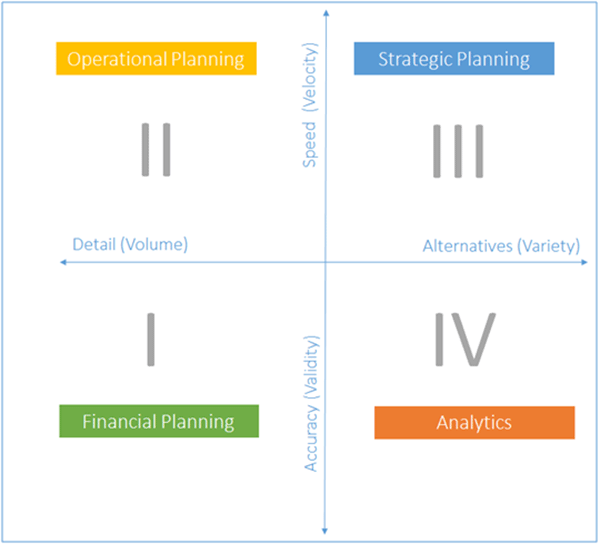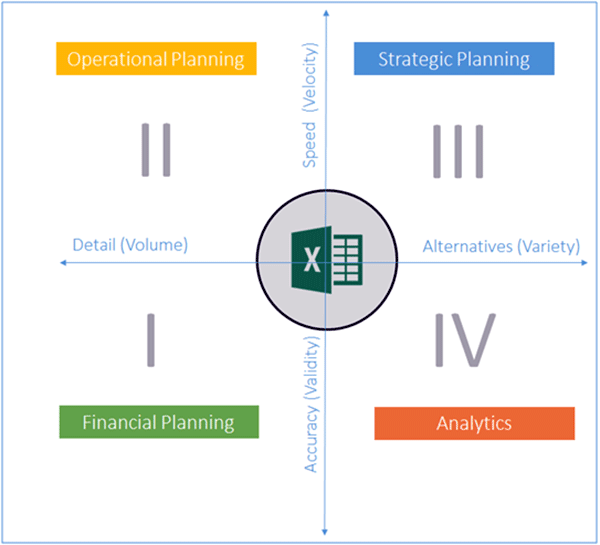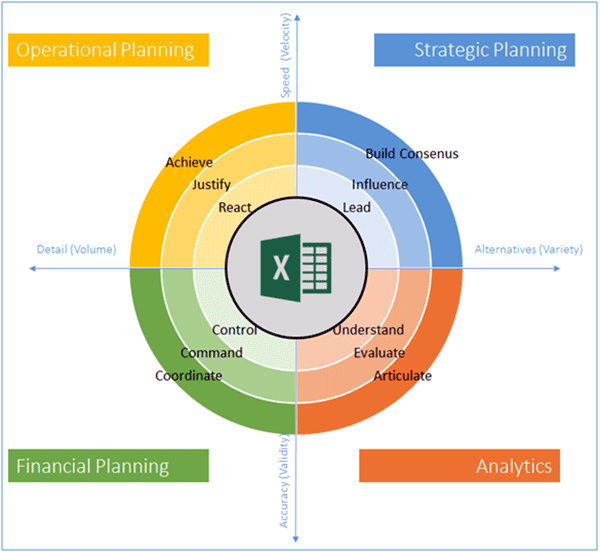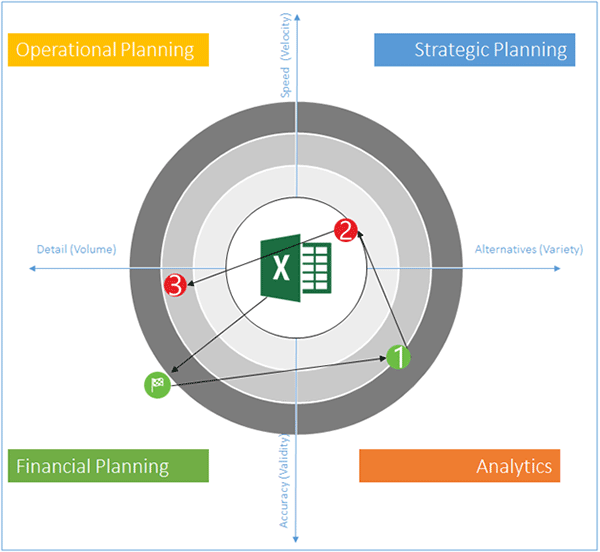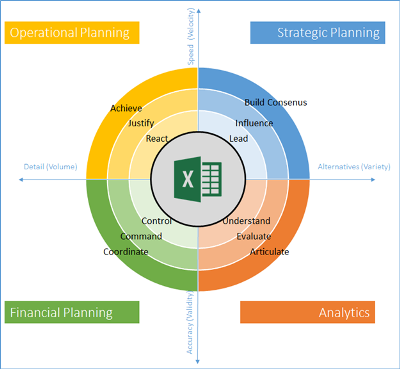 Integrated Business Planning (IBP) is a coordinated approach to planning that is designed to achieve greater alignment between the Strategic, Financial and Operational levels within an organization.
Integrated Business Planning (IBP) is a coordinated approach to planning that is designed to achieve greater alignment between the Strategic, Financial and Operational levels within an organization.
Since the birth of Enterprise Performance Management (EPM/CPM), Integrated Business Planning has always been touted as the ultimate “future state” environment that all organizations should aspire to.
Historically, EPM, was focused heavily on vertical planning (both top-down and bottom-up), but in recent times, EPM has now expanded to include horizontal planning (operational planning across departments such as Sales, Workforce, Finance, IT, Marketing and Supply Chain).
So 20 years on since the birth of Performance Management, how does Integrated Business Planning stack up at your organization?
Well, if you’re like most of the organizations I’ve spoken to, my bet is that you’re probably still relying heavily on spreadsheets for at least one (if not all) of the areas of Integrated Business Planning.
Perhaps your organization has implemented a formal Financial Planning process, but still relies heavily on spreadsheets to provide the underlying operational data. Or perhaps you’re still doing all your strategy and dashboarding in Excel.
If this sounds familiar, then your organization might actually just be squeaking by. The good news is, there’s still plenty of room to optimize your Integrated Business Planning potential.
Framing Up Integrated Business Planning
In order to establish a backdrop for Integrated Business Planning, it’s helpful to lay down some fundamental relationships and boundaries between each of the individual areas.
Financial Planning is the process of collecting detailed budgets and forecasts. Much to the dismay of many folks involved in this process, Financial Planning is naturally a time-consuming process, because of the desire to validate (approve) information at quite detailed levels within the organization.
Operational Planning is also very detailed by nature, but rather than focus on the need for submission based approval, Operational Planning focuses more on driver-based relationships that enable organizations to justify targets or react quickly to changing environments.
Strategic Planning is also driver-based, however, the need for detail is replaced with the need to rapidly evaluate alternative opportunities in order to establish consensus across small teams of peers.
Finally, Analytics is all about making sense of validated data by obtaining insightful views of information that shed light (or tell an explanatory story) within various areas of the business.
The Domain of Spreadsheets
Whether you like it or not, spreadsheets are the quintessential jack-of-all-trades. Organizations use them for all sorts of activities, including Integrated Business Planning. As a result, they are the ultimate fallback tool. But if they are truly the jack-of-all-trades then by definition this would mean that they are also the-masters-of-none.
However, rather than focusing our attention on the negative attributes of spreadsheets (a popular tactic within EPM) I think it’s actually more beneficial to take a more pragmatic stance with regards to spreadsheets.
By this I mean that we need to realize that (whether we like it or not) spreadsheets will become a reality in your Integrated Business Planning process unless organizations can articulate their current spreadsheet limitations and justify valid reasons to strip them from the process altogether.
Spreadsheets may always be used as a personal productivity tool that enables users to perform ad-hoc activities, but there is a significant difference between that and the need to rely on them for formal repetitive processes associated with Integrated Business Planning.
Establishing Your Competency Goals
In order to break free from the domain of spreadsheets, organizations need to set lasting competency goals that extend beyond the capabilities of spreadsheets.
In the case of Financial Planning competency goals may include:
- establishing better control of the environment,
- introduce better command of the data through submission and approval processes and
- optimize coordination efforts to help reduce the time and effort associated with the budgeting and forecasting process.
The competency goals of Operational Planning often include areas like:
- the ability to react quickly to changing business environments,
- the ability to justify targets and
- establish an environment that enables employees to achieve positive results.
Strategic Planning is often an underserved area of Integrated Business Planning. Competency goals in this area include things like:
- the ability to lead by presenting alternatives that can be evaluated side by side,
- Improve your ability to influence peers by promoting your unique perspectives
- the ability for organizations and teams to pare down alternatives together in order to build consensus around optimal strategies.
Finally, competency goals for Analytics include:
- the fundamental need to analyze or understand the data quickly,
- the ability to evaluate its worth and
- the ability to articulate that worth to others in the form of simple data layouts, graphs and even stories.
Maximizing your Chance for Success
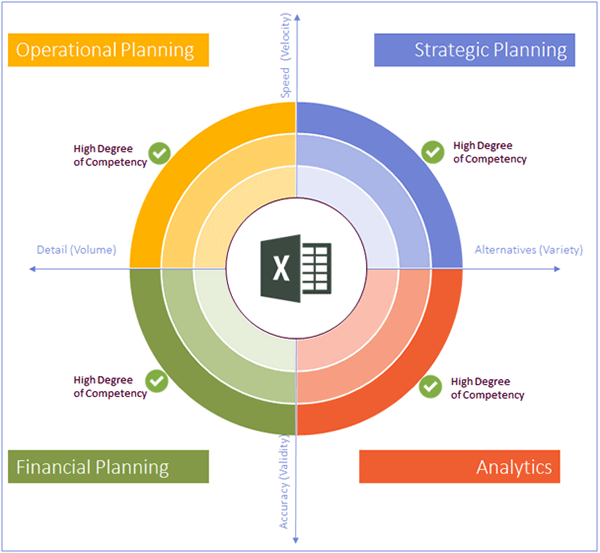
As organizations begin to take the leap to EPM, it’s quite common for people to adopt the approach that that EPM is a journey.
What we often mean by this is that we’ll take it step by step, achieving competency in a single area of Integrated Business Planning, with the goal of expanding to the other areas over time.
Based on my experiences, this is generally a winning approach. Certainly, not every EPM implementation goes well, but by reducing the scope and addressing the pain points of spreadsheets head-on, organizations should stand a better chance of achieving their mission with minimal distractions.
Of course, deciding which area to start with will depend greatly on your organization’s needs and their perceived efforts required to achieving lasting change.
Losing Sight of the Journey
Fresh off a successful EPM implementation, many organizations are energized and want to continue to leverage that momentum to reduce their reliance on spreadsheets by implementing additional areas of Integrated Business Planning.
However, here is where the problems could start to creep in. Rather than continuing to focus on an approach that was responsible for their initial success (i.e. eliminate the need for spreadsheets based on a clearly defined set of requirements) organizations start to take a completely different approach.
Rather than tackle the problem from the ground up, they put too much focus on how they’re going to leap from one IBP area to the next. This can be a real problem.
Establishing strong integration and wanting to leverage newly acquired solutions is understandable. But those should never be the main driver for change.
Poor alignment of Integrated Business Planning can manifest in a number of ways. Here are a few outcomes you should look to avoid:
- “Hangover limitations”. Unlike an organization’s initial EPM implementation, follow-on implementations tend to have more limitations or restrictions due to specific design decisions taken in previous implementations. This is usually not a show stopper, but it could probably be avoided if organizations were designing a solution from the ground up.
- “Implementation Despair”. Many times organizations implement an initial EPM project and then realize that expanding into other areas of Integrated Business Planning using the same tools and techniques would be a significant challenge. As a result, they simply continue to use spreadsheets in those areas. This problem could be avoided if companies focus on addressing the real problem rather than either continuously deferring the problem or worse concluding that the problem can’t be solved.
- “One-size fits all”. The worst of all negative outcomes is to engineer a solution that does not actually address the problem. This situation is actually far worse than continuing to use spreadsheets, but it actually happens quite a lot. The main reason why it happens is because organizations emphasis the wrong requirements. Again, rather than focusing on the real problem at hand, they bend the problems to address the existing solution. Let’s not forget, if all you have is a hammer, then everything looks like a nail.
Summary
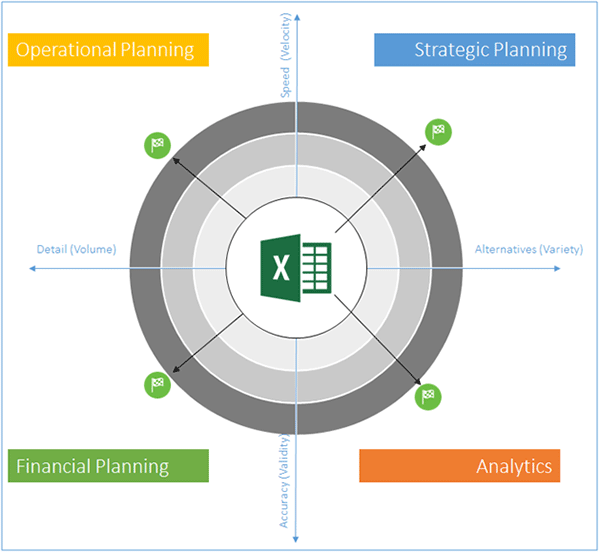
Achieving higher levels of competency in Integrated Business Planning need not be that elusive of an idea.
Yet in practice, it’s amazing how many organizations have fallen short of reaching optimal success for one reason or another. Keep these simple guidelines in mind:
- Challenge your organization to correctly frame the real forces at play.
- Set your own competency goals (make sure they exceed what can already be achieved using spreadsheets).
- Attack the problem from the root (ensuring that you are properly eliminating reliance on the need for inefficient spreadsheets)
- Avoid the temptation to let your software tools drive what is possible, rather select tools that help you get there.
By following these simple pragmatic steps your organization will be better positioned to achieve a high functioning Integrated Business Planning process.
International FP&A Board
The International FP&A Board discussed the subject of Integrated FP&A on several occasions.
On 2 February 2017, the London FP&A Board was devoted to integrated FP&A and how it can help harmonize organisational planning processes. The meeting was sponsored by CCH Tagetik.


